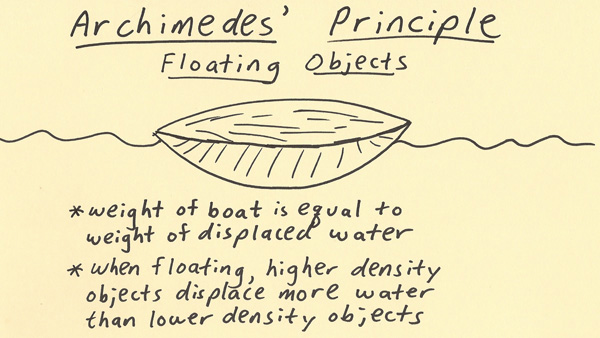
METEOROLOGIST JEFF HABY
Archimedesí principle helps explain how objects float and sink. The classic illustration of Archimedesí Principle is a boat on the water. The boat
is designed so that it can float by not allowing water into the boat. If the boat becomes too heavy though, the boat would sink far enough
into the water that eventually water would go over the edge and fill the boat causing it to sink. The amount of water the boat displaces
depends on the weight of the boat. The heavier the boat is, the more water it will displace. The weight of the boat will displace an equal
weight of water. The effect of this is that the boat will be farther in the water when it is heavier. The density of the boat and objects
in the boat will impact how much water is displaced. Materials that have a density that is higher than water will displace a higher
volume of water. For example, an object in the boat with a density of 2 g/cm^3 that occupies a 1 cm^3 volume for each unit will end
up displacing 2 cm^3 of water for each unit since the object has a density double that of water. Boat designers take this into
consideration when building the boat and when determining the maximum capacity of weight the boat can carry.

|
|
|

